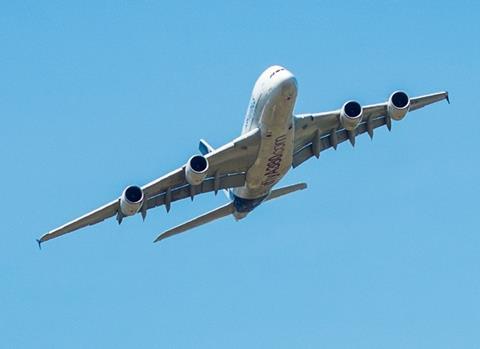Operators of early Airbus A380s are set to be instructed to check internal wing-rib feet for cracking linked to long storage periods.
The European Union Aviation Safety Agency is proposing repetitive examination of feet attached to 24 metallic alloy ribs.
It refers to a trend of “an increasing number of unexpected finding[s] of damage” to rib feet during airworthiness inspections.
Analysis of these findings shows that a “predominant, driving parameter” seems to be significant time spent on the ground – during parking or storage – particularly in certain specific environmental conditions.
EASA attributes cracking of the type-7449 alloy to embrittlement from absorption of hydrogen.
“Timely detection of cracked rib feet is necessary,” it adds, because the structural integrity of the wing could be reduced.

Airbus has already drawn up a criterion which takes into account storage time on the ground which should be used to determine repetitive inspection thresholds for individual aircraft.
The proposed checks cover around 100 of the earliest A380s up to MSN109.
Concerns over the effects of storage on A380 wing structures have been the subject of previous EASA directives on inspection intervals for flanges on the front and rear spars.
Several carriers withdrew A380s from service, and placed them in long-term storage, as the pandemic sapped the market for intercontinental air travel. But a number of operators have since re-introduced the type.


























